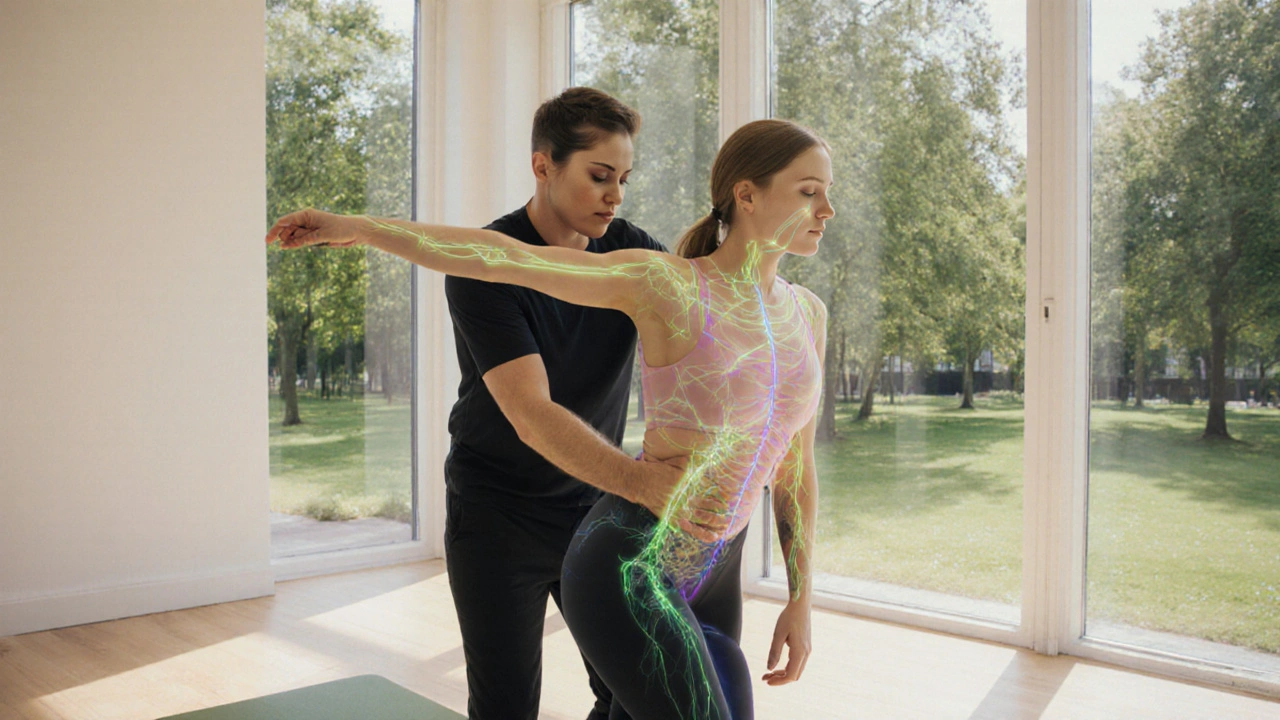Structural Integration: A Hands‑On Way to Better Movement
If you’ve ever felt tight shoulders after a long day at the desk, or notice a nagging back ache that never quite goes away, structural integration might be the answer. It’s a type of bodywork that focuses on the connective tissue – the fascia – that wraps every muscle, bone, and organ. By gently loosening and re‑aligning this web, you can move more freely, stand taller, and feel less pain.
How Structural Integration Works
During a session, the therapist uses slow, deep pressure on specific spots where the fascia has become stuck or scarred. Think of it like smoothing out a wrinkled sheet; the goal is to bring the tissue back to a more relaxed, organized state. Unlike a typical Swedish massage that rides on top of the muscles, structural integration works deeper, often reaching the layers that control your posture and gait.
The process isn’t a one‑off fix. Most people go through a series of 10‑12 sessions, each building on the last. Early appointments might target the biggest tension zones – the neck, lower back, or hips – while later ones fine‑tune the whole body’s alignment. The therapist will also give you simple stretches or movement cues to keep the benefits flowing between visits.
Key Benefits You’ll Notice
1. Better posture: When fascia is balanced, your spine can return to its natural curves, reducing that forward‑head‑and‑shoulder slump.
2. Less chronic pain: Many clients report a drop in back, neck, and joint discomfort after a few sessions because the pressure eases nerve irritation.
3. Increased flexibility: Freed‑up fascia allows muscles to lengthen more easily, so everyday activities like reaching for a high shelf feel smoother.
4. Improved athletic performance: Runners, cyclists, and weightlifters often notice quicker recovery and a more efficient stride when their connective tissue moves without restriction.
5. Stress relief: The deep, rhythmic pressure triggers the body’s relaxation response, lowering heart rate and calming the nervous system.
Because structural integration targets the root of many movement problems, it pairs well with other therapies you might already enjoy – like Swedish massage, Thai massage, or even a simple home stretch routine.
When choosing a practitioner, look for someone trained in the “Ten‑Series” method, which is the most widely recognized curriculum. Ask about their experience with specific issues you have, whether it’s lower‑back pain, tension headaches, or a desire to improve athletic performance.
After a session, you’ll likely feel a mix of relief and a gentle soreness, similar to a good workout. Drink plenty of water, move mindfully, and give your body time to integrate the changes. Consistency is key – the more regularly you attend, the faster your fascia will remodel and the longer the benefits will last.
Ready to try structural integration? Start with a short consultation, explain your goals, and see how the therapist tailors the treatment to you. Most people notice a shift within the first few visits, and the cumulative effect can be life‑changing.
Whether you’re chasing a pain‑free back, a stronger posture, or simply a deeper sense of relaxation, structural integration offers a practical, hands‑on path. Give it a try and feel the difference that a released fascia can make in everyday life.
Rolfing Myths Debunked: The Truth About Structural Integration
Uncover the facts behind Rolfing, separate truth from rumor, and learn how this fascia‑focused practice truly works for posture, pain and movement.

